5 Most Common Hip Injuries in Sports
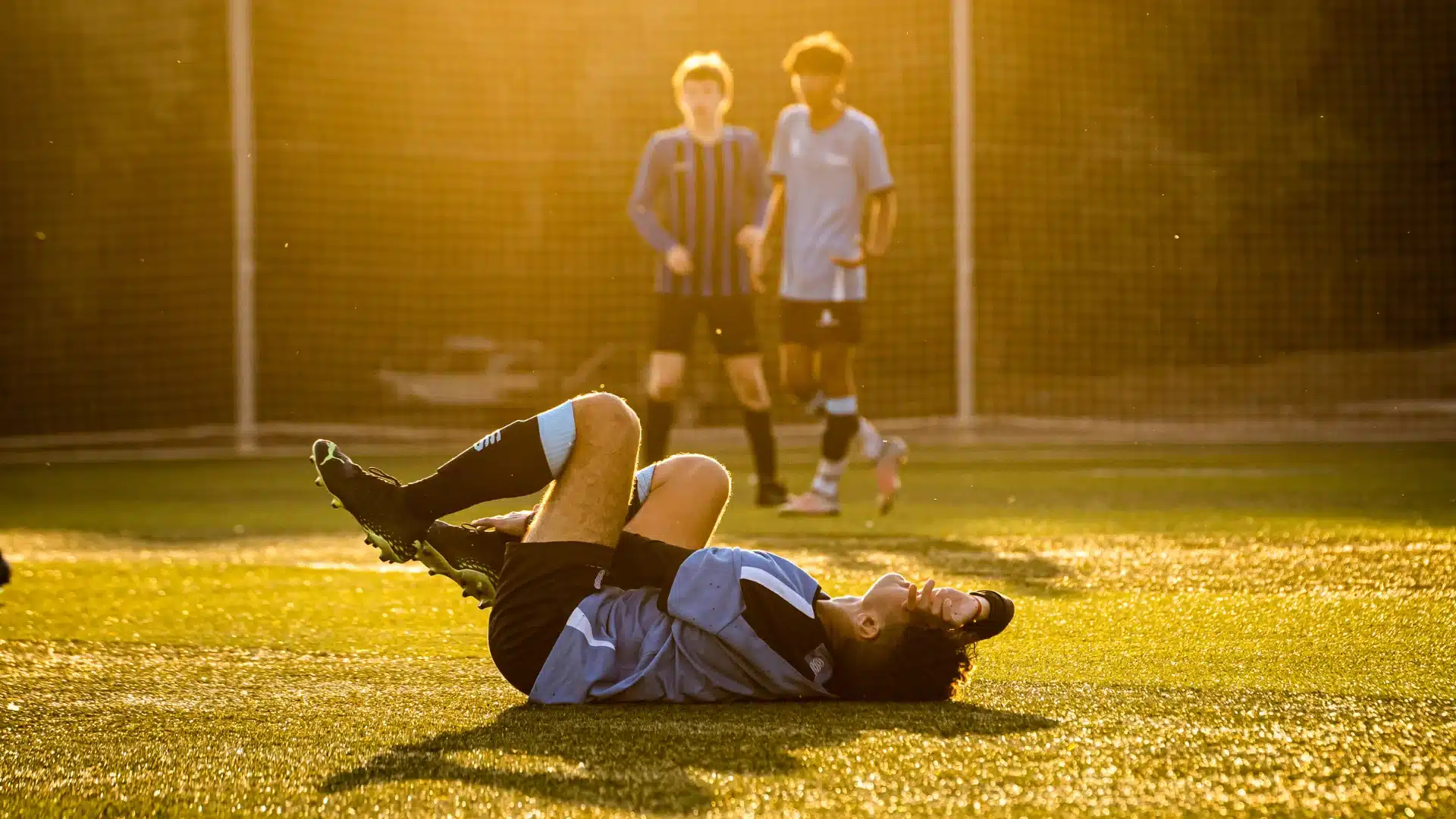
Overview
When it comes to sports, your hip joints are the ones that allow you to run, jump, pivot, and kick like a pro. But even the best players can get sidelined when their hips get injured. Let’s go into the five most common hip injuries in sports, how they happen, and what you can do about them without needing to retire your shoes.
1. Hip Flexor Strain
Imagine sprinting to score the winning goal and suddenly feeling a sharp pull in the front of your hip. That’s a hip flexor strain, often caused by overstretching or sudden, intense movement. It’s the kind of injury that makes athletes stop in their tracks due to sudden hip pain.
How It Happens: Due to overuse, absence of flexibility, or inappropriate warm-up.
Fix It: Take proper rest.
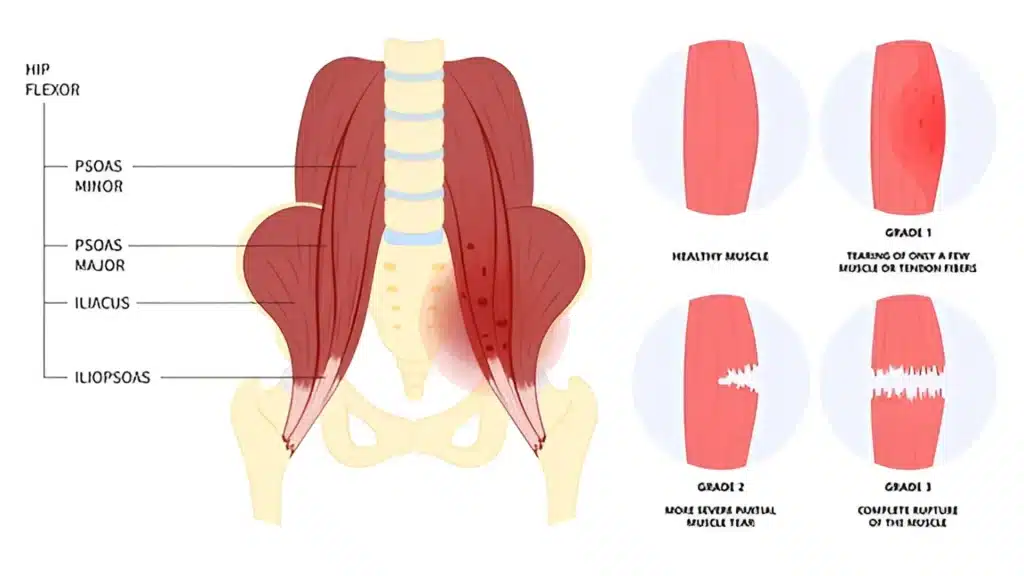
2. Hip Labral Tear
Think of your hip joint as a ball-and-socket system with a protective gasket (the labrum) that keeps everything running smoothly. A labral tear is like a chip in that gasket, causing pain, stiffness, and sometimes a clicking sensation.
How It Happens: Repetitive movements, especially twisting or direct trauma which are common in sports like hockey, gymnastics, and golf.
Fix It: Mild cases might improve with physical therapy, but severe tears could require surgery. Either way, core strengthening is key to avoiding future issues.
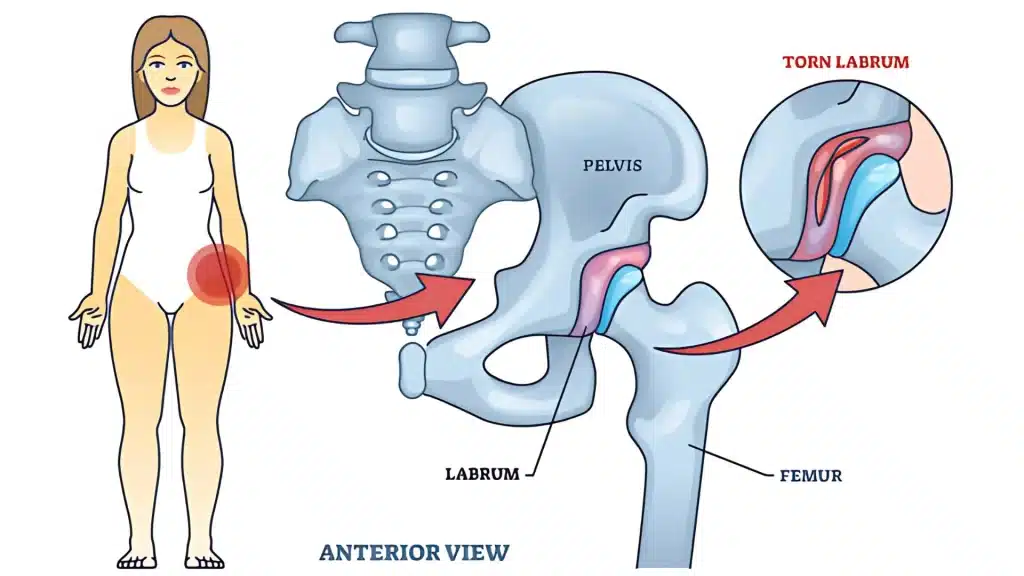
3. Hip Bursitis
Do you feel like your hip is on fire after practice? You might have hip bursitis, which occurs when the bursae (small fluid-filled sacs cushioning your joints) become inflamed.
How It Happens: Repeated friction or trauma, often from running or cycling. Tight muscles and poor posture can add fuel to the fire.
Fix It: Rest, ice, and anti-inflammatory meds usually do the trick. Incorporating stretches for your IT band and glutes can prevent it from coming back.
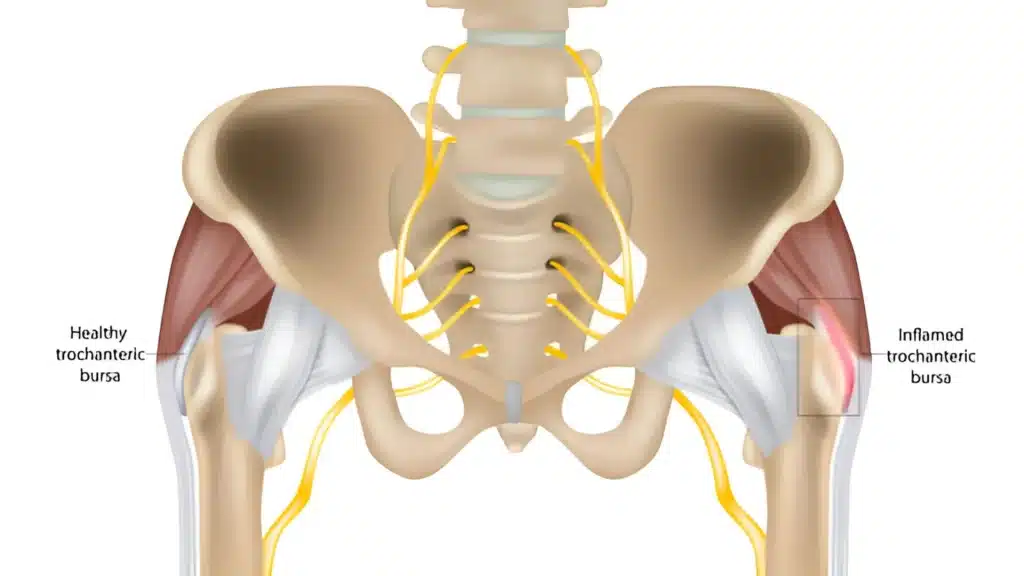
4. Sports Hernia
Despite its name, a sports hernia or athletic pubalgia isn’t a traditional hernia but a strain or tear in the soft tissue around your groin. It’s a common plague for athletes in sports involving sudden changes of direction, like basketball or tennis.
How It Happens: Repeated twisting and turning movements, often without sufficient core strength to stabilize your pelvis.
Fix It: Rest and rehab are your starting points. Severe cases might need surgical intervention, but strengthening your core can keep this pesky injury at bay.
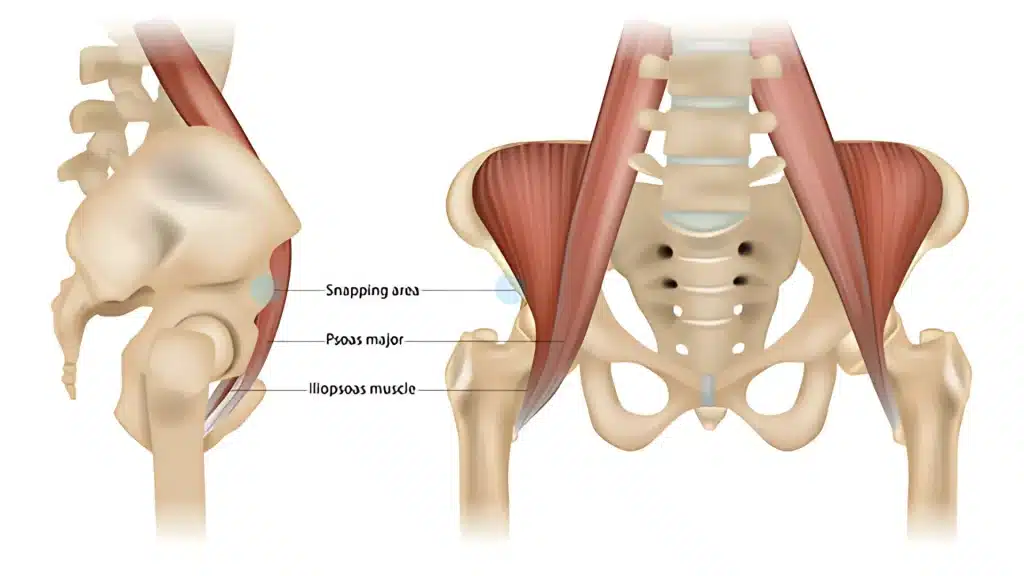
5. Hip Dislocation
You know those moments in contact sports where someone goes down clutching their hip? It’s never a good sign. Hip dislocations, while not super common, are definitely serious. It’s basically when your thigh bone pops right out of the hip socket.
How It Happens: Usually, it takes a pretty significant impact, like a hard fall, a collision (think rugby or football), or some kind of extreme twisting motion, like a bad ski accident.
Fix It: This is definitely a situation where you need to see a doctor right away. It’s a medical emergency. Once they get the joint back in place, rehab and strengthening exercises are important for a full recovery.
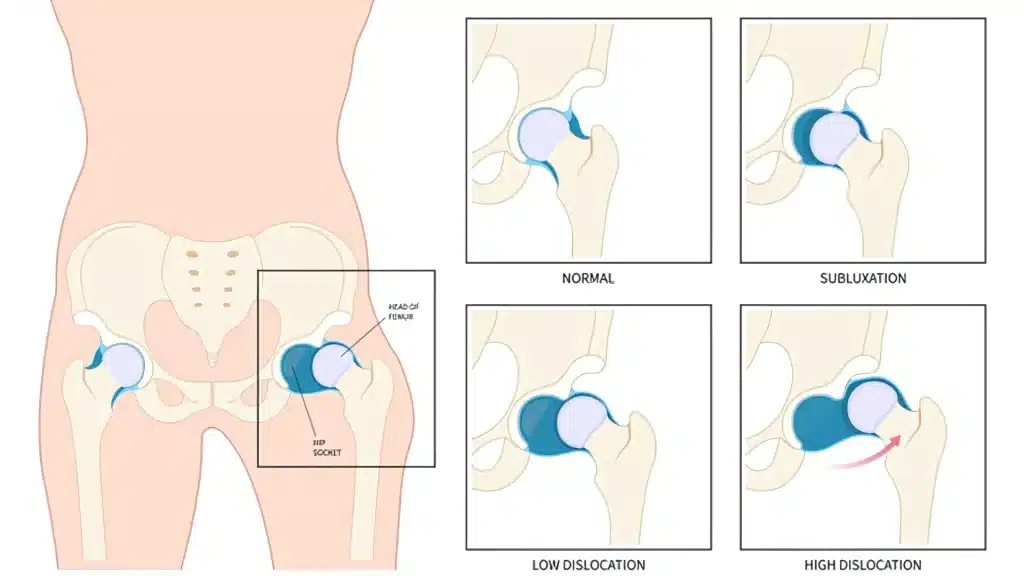
Prevention
We all know how vital our hips are, especially if we’re active. So, now that we’ve talked about what can cause hip problems, here are some practical tips to keep yours in top condition:
Warm-Up Properly: Get those muscles and joints ready to roll with dynamic stretches. Think leg swings, hip circles, and torso twists.
Strengthen Your Core: It keeps your pelvis stable and lessens the chance of strains. Exercises like planks, bridges, and Russian twists can really help.
Focus on Flexibility: Regular stretching is key to keeping your hip muscles and joints nice and limber. Try incorporating stretches like butterfly stretches, yoga poses, and lunges into your routine.
Invest in Recovery: Rest days are essential for your muscles to repair themselves. Foam rolling can also be great for releasing tension and improving blood flow.
Listen to Your Body: Our body signals us each time for everything, so make sure to listen to it. Check out or recent piece on bad habits to avoid.
Takeaways
Your hips are vital components of your athletic performance and mobility. Addressing any issues related to them in a timely manner will greatly affect your recovery process. Make sure to avoid and keep an eye on these five common hip injuries in sports.
FAQs on Sports Hip Injuries
How long does it take to recover from a hip flexor strain?
Recovery time varies based on the severity of the injury. Mild strains can heal within a few weeks. However, moderate to severe strains might require anywhere from 6 to 8 weeks or more to heal fully. It’s essential to follow a structured physical therapy program to ensure complete recovery.
Are there specific sports that are more prone to causing hip injuries?
Yes, certain sports have higher physical demands such as those that involve running, rapid changes in direction, twisting movements, or physical contact ..For example, football, basketball, cricket, and hockey are particularly associated with hip injuries. In these sports, everyone should be aware of the risks and take preventive measures, such as proper warm-up routines and strength training, to protect their hips.
What is the best way to prevent hip injuries?
To prevent hip injuries, it is important to engage in a good fitness routine that prioritizes flexibility, strength, and proper mechanics. Stretching before activities, following a strength training program, and performing cool-down stretches afterward will help reduce injury risk. Additionally, maintaining a healthy weight and using appropriate footwear can also contribute to hip health.
